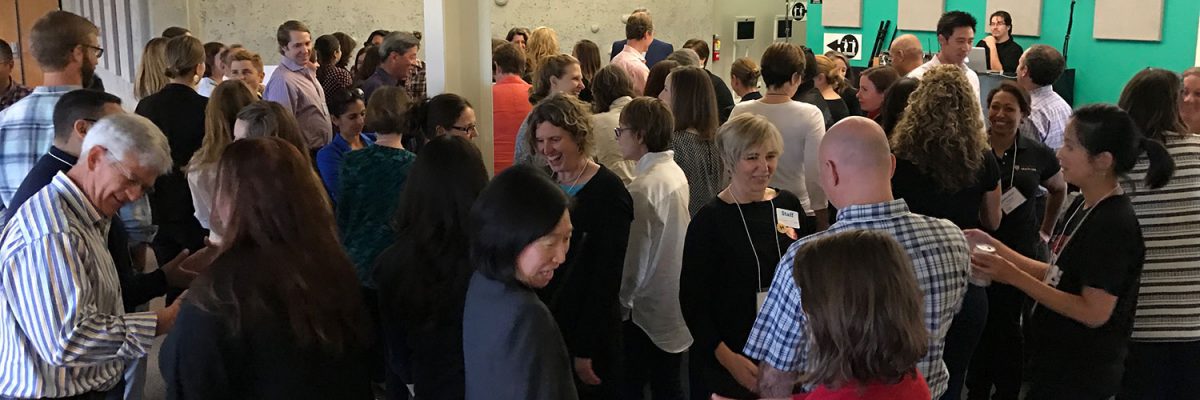The lines that have been traditionally drawn in health care are shifting and fading, forcing us to think differently about how we care for the patients. As health care reform is implemented in 2014, those patients who have typically been cared for in safety net settings (community clinics and public hospitals) may be blurring into other non-safety net clinics as they have new choices and broader networks of providers. However, it is possible that many of these patients will remain or choose safety net systems in which case providers will have to address capacity issues and look for creative ways to increase access to care with a limited set of providers. As payment reform and new models of care come into fruition, the traditional ways of caring for patients will also shift to be more responsive to the needs of patients with a focus on keeping them healthy and at home. It is with this backdrop that the ILN and the Safety Net Innovation Network came together at UCLA for three days in October 2013.
What is the Safety Net Innovation Network?
The Safety Net Innovation Network (SNIN) began in June 2012, with funding from the Blue Shield of California Foundation and managed by the Center for Care Innovations, to respond to the changing forces in health care. As safety net organizations recognize that “business as usual” isn’t going to be enough to survive in this new environment, there is a realization that there needs to be forums to jump start and spread new ideas. The Safety Net Innovation Network (SNIN) was inspired by the Innovation Learning Network (ILN) but with a deeper focus on identifying approaches that would work for underserved patient populations. The SNIN has built on the best of the ILN (the great networking, creating new relationships, sharing ideas, and applying innovation thinking to existing programs), and then goes a step further to support projects that have significant value to the safety net in California. By zeroing in on the key priority areas across and focusing in on those most pressing needs, SNIN members have been able to participate in a variety of programs to advance these goals. These programs typically combine modest grant funding, innovation technical assistance and coaching, and participation in a learning community to push the goals of the projects forward. One of the big focus areas for the safety net (and a connection to the theme of the October meeting) is improving access to care. Safety net providers have been developing and identifying innovations on how patients can access services through use of new technologies and processes. Some of these ideas were highlighted at the October ILN meeting in the Gallery of Innovations.
Gallery of Inspirations
The Gallery of Innovations (and Inspirations) highlighted innovations from ILN members, entrepreneurs and companies, and safety net providers who have all been creating and implementing innovations to blur the lines between the clinic and home. We saw a range of innovations — from low-tech solutions like better leveraging the phone to conduct visits to implementation of more complex telemedicine solutions across robust networks to an array of solutions that leveraged smart phones, and reminders to patients to help them better manage their health outside the walls of the care delivery systems.
There is a misconception that safety net providers don’t innovate because it takes significant dollars and staff. The Gallery of Innovation demonstrated that the conditions for innovation are not related to the resources of an organization but rather to the need for change, the commitment of staff and providers, and a desire to improve care for patients. The Safety Net innovations showcased in the Gallery demonstrated all three.
The Power of the Network
A primary driver for initiating the ILN was to build a strong network of individuals who were connected and could support each other in transformation. The October BLUR meeting highlighted the power of learning from health care systems that are different from our own and the importance of making these connections to push our thinking. We continue to learn that one of the biggest factors to support the successful development, piloting and spread of innovations is to leverage relationships. In these personal connections, we gather inspirations and new ideas, we learn about how to succeed in implementing innovations and how to sustain changes in our organizations. The more we can broaden our networks to include BOTH safety net and non-safety net providers, the more we can collectively succeed.
The Urgency for Innovation
The talks by Ian Morrison (health care futurist) and David Feinberg (CEO, UCLA Hospital System) were inspirational. They introduced new perspectives, provided a powerful urgency for innovation, and provided context for why it is essential we all continue the innovation journey. It is easy to get caught in the weeds of our work and not step back to see the big picture. Both Ian and David helped us to see that the world REALLY is changing all around us and it will be evolving for all stakeholders in the health care system. It will require us to create new partnerships, enter into collaborations that help patients live healthy at home, and to remember that patients and families really do come first.
We hope the October meeting was the first of many joint ILN-SNIN meetings. The power of bringing together networks has great benefit to everyone involved and has inspired many of us to forge new collaborations in this new “blurry” world.
Download this year’s “Insights” here.


